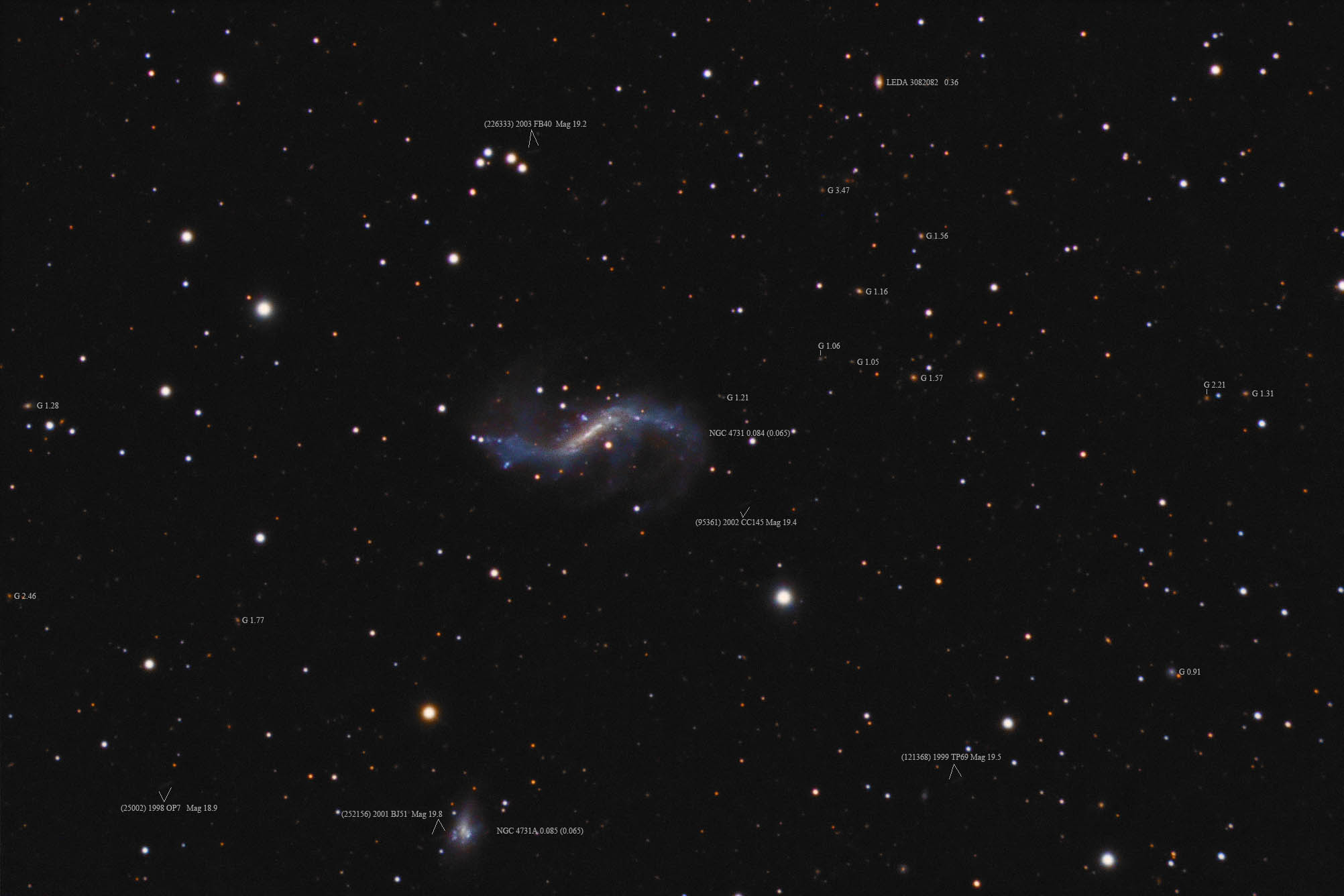| Description | Images |
Object name: NGC4731Designation(s): NGC4731, NGC4131A, NGC 4731 is a very strange, distorted galaxy on the far side of the Virgo Cluster, about 65 million light-years distant though red shift puts it far closer. It even lies within the borders of the Constellation of Virgo. NED gives it the rather normal classification of SB(s)cd. This gives no hint of its strange, distorted shape. Reminds me of some sea slugs swimming through the ocean. Or maybe some sort of dragon. Others tell me they see a salamander. The NGC project's simpler classification system does indicate it is not ordinary classing it as SBc pec. Most sources attribute its distorted shape to it interacting with nearby NGC 4697 well out of my image to the northwest. Low in my image, however, is NGC 4731A. It too seems strange though most irregular galaxies have a rather messed up shape. NED classes it as Im pec. Could it have been harmed by coming too near NGC 4731? The more I look at it the more I see two small interacting spiral galaxies coming together in a "V" shaped pattern. I can't find any very high resolution images of it but I'm beginning to think it possible this is two galaxies rather than one. Yet another opinion is offered by a paper saying "Interaction. In contact with it to the east, and with each other, are two not dense companions 19 mag." Apparently, this is the "V" shaped structure and the two blue objects to the east (left). I see these two objects as star clouds created from the collision if my interpretation is correct. This needs a lot more study in my opinion. Related Designation(s):2MASS J12510117-0623345, 2MASX J12510109-0623349, 2MASXi J1251010-062333, 2MFGC 10130, AGC 520188, AKARI J1251015-062338, APMUKS(BJ) B124825.52-060709.6, CGS 422, HDCE 0740 NED006, HIPASS J1251-06, HOLM 472A, IRAS 12484-0607, IRAS F12484-0607, LCRS B124825.4-060711, LDCE 0904 NED261, LGG 314:[G93] 005, MCG -01-33-026, NGC 4731, NGC4131A, NGC4731, PGC 043507, UGCA 302, USGC S190 NED19, [BEC2010] HRS 266, |

